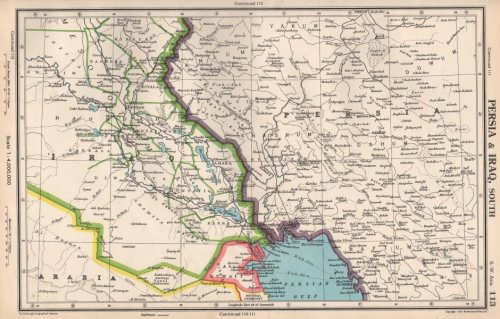Good Times in the Neutral Zone,When I was a young peashooter I can remember the old, outdated histor
Good Times in the Neutral Zone,When I was a young peashooter I can remember the old, outdated history and geography books our class made due with for elementary social studies. Being the nerdy nerd I am, I of course read ahead, looked at illustrations, and dutifully studied the many maps and graphs throughout the ancient tome. When looking at maps of the Middle East, I noticed a geographical oddity which sparked my curiosity. In between Iraq and Saudi Arabia, as well as Kuwait and Saudi Arabia, there were two large plots of land called, “Neutral Zones”. I had to wonder, what were the Neutral Zones? Why were they neutral? Did Klingons live there? My teacher didn’t have any answers, and told me to shut up :’{In 1921 an Arabian nobleman named Ibn Abdul Azziz al Saud conquered the region of Njed, and added it to his kingdom. Ibn Saud, who was supported by the British Government, was quickly uniting Arabia into a single kingdom, which would become the future Saudi Arabia. With the rise of a new nation state in Arabia and the Middle East, Britain demanded well defined borders between Saudi Arabia, and its dependencies such as Iraq and Kuwait. At first Ibn Saud wanted to avoid boundaries. After all, the borders wanted by Britain cut across the roaming territories of several nomadic peoples who owed little allegiance to kingdoms or nation states. Setting strictly defined borders would only lead to future international incidents as nomadic tribes crossed them at will. On the 2nd of December, 1922 Ibn Saud and Britain came to a compromise called the Protocal of Uqair, which would hopefully rectify the situation. A defined border between the Kingdom of Njed (Saudi Arabia) and Iraq. Near the Persian Gulf, two Neutral Zones were created along the Iraq-Saudi border and Kuwaiti-Saudi border. The two zones, 7,044 km² and 5,770 km² respectively, contained a number of fresh water wells, the few that were available in the area. For thousands of years, nomads had used those two areas as place or rest, were one could water his animals, bathe, and relax before continuing a rough journey into the desert. Since rigid borders would cut off the nomadic tribes from their traditional watering holes, it was agreed that the two areas would become “Neutral Zones”, where neither nation could claim the land, and nomads from both nations could legally water their animals.While the idea of having the Neutral Zone was a good one, modern times were against the nomads, and while the nomadic tribes valued their water wells, the world would come to value their oil wells. Discovery of oil in the Saudi-Kuwaiti Neutral Zone would lead both countries to partition the zone in 1969. Discovery of oil in the Saudi-Iraqi Neutral Zone would lead to partition in 1981, however the treaty was never finalized, and the Neutral Zone continued to exist despite the agreement.In 1991, as the Gulf War loomed over the horizon, Iraq cancelled all international agreements with Saudi Arabia. Likewise, Saudi Arabia cancelled all international agreements with Iraq. Thus, the existence of the Saudi-Iraqi Neutral Zone came to an end, with the zone being partitioned evenly after the Gulf War.Armed with this piece of knowledge, the next time I see my old elementary teacher, I shall have my revenge. -- source link
#history#iraq#saudi arabia#ibn saud#arabia#neutral zone#politics#geography

